Beautiful flowers come in a wide range of shapes, sizes and colors, and each is stunning in its own unique way.
By learning about all the different types of flowers that come in each color, you are expanding your knowledge, and widening your pool of the flowers that you can choose from when decorating your garden.
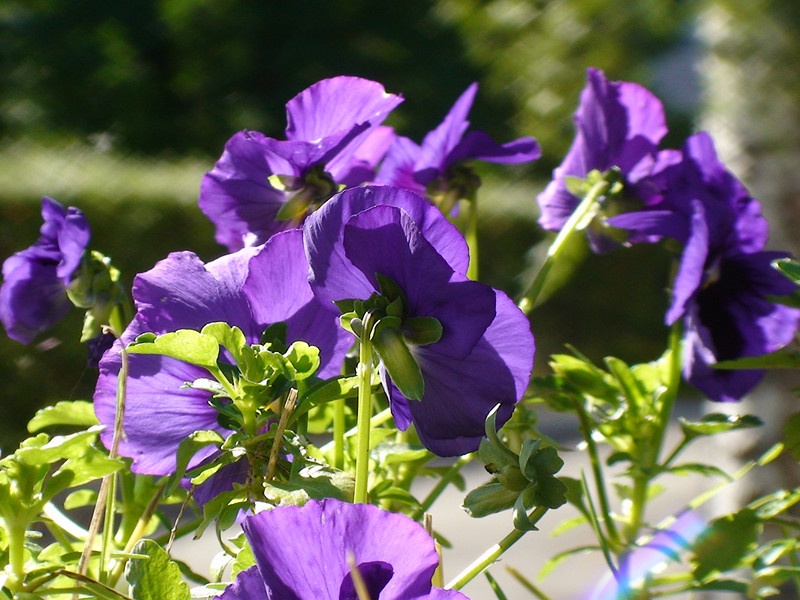
Violet flowers are often a popular choice, and this is largely due to their dark, dramatic hue, their eye-catching appearance, and the way that they can work so beautifully with contrasting and similar colors to create a flowerbed, garden, or window box that stands out from the crowd for all the right reasons.
To help you establish the most popular options, read on for some common violet flowers, and continue your horticultural adventure.
Foxgloves

Botanical name: Digitalis
Immediately recognizable and distinctive, foxgloves are a common sight in gardens and woodlands everywhere. The blooms are bell shaped, and come in stunning violet hues that capture the eye.
Just keep your distance if you have heart issues, as the oils contained in the flowers can be dangerous.
Sword Lily
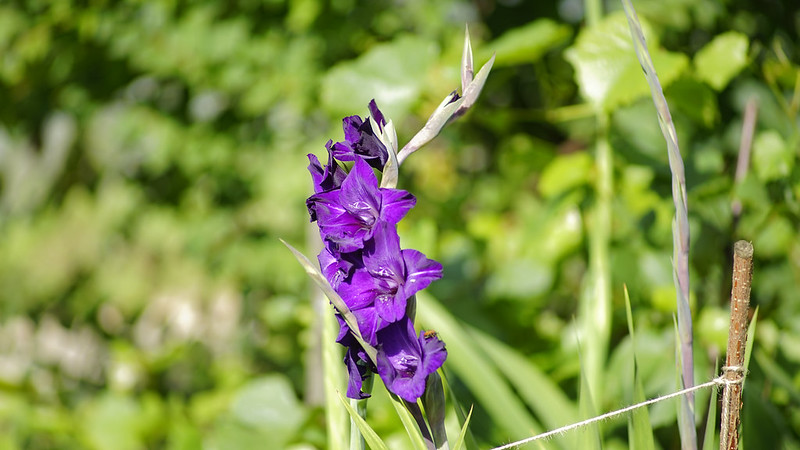
Botanical name: Gladiolus
For a shock of violet to grab attention in your garden, the Gladiolus is a top choice. Their violet sheen looks amazing when paired with sunflowers, and the plants can reach up to six feet in height, making them great climbers.
Waxflower
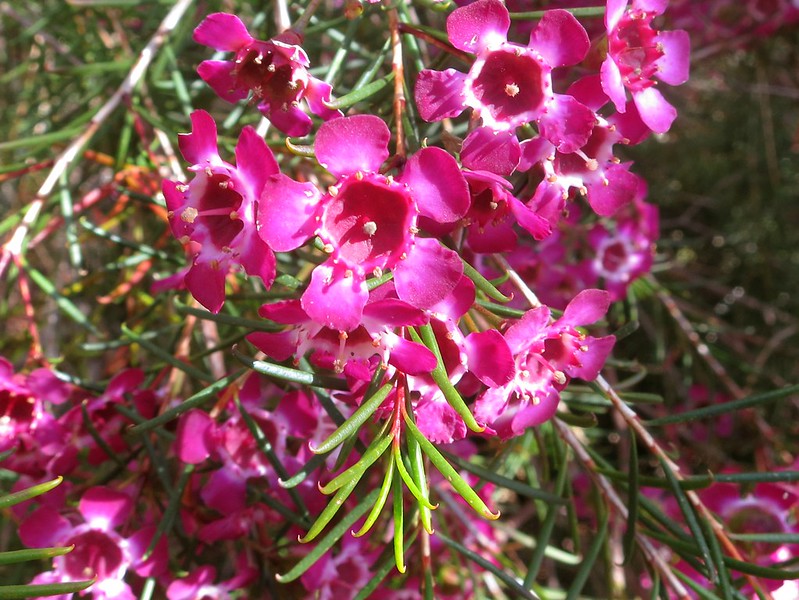
Botanical name: Chamelaucium uncinatum
For a flower that looks amazing even as the cold weather sets in, you should consider a waxflower. They bloom in winter, and offer a unique look that is a great addition to a bouquet or floral arrangement.
Perennial Geranium
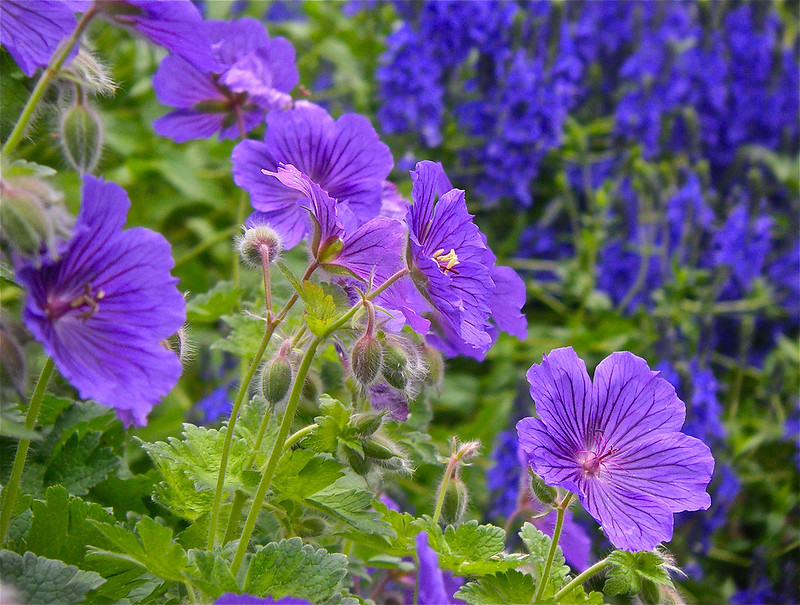
Botanical name: Geranium bohemicum
With their bright, cheerful violet color, and ability to grow quickly and well, the perennial geranium is ideal for a rich ground covering, or for window boxes, and will offer color from the early months of summer until well into the fall months.
Heliotrope
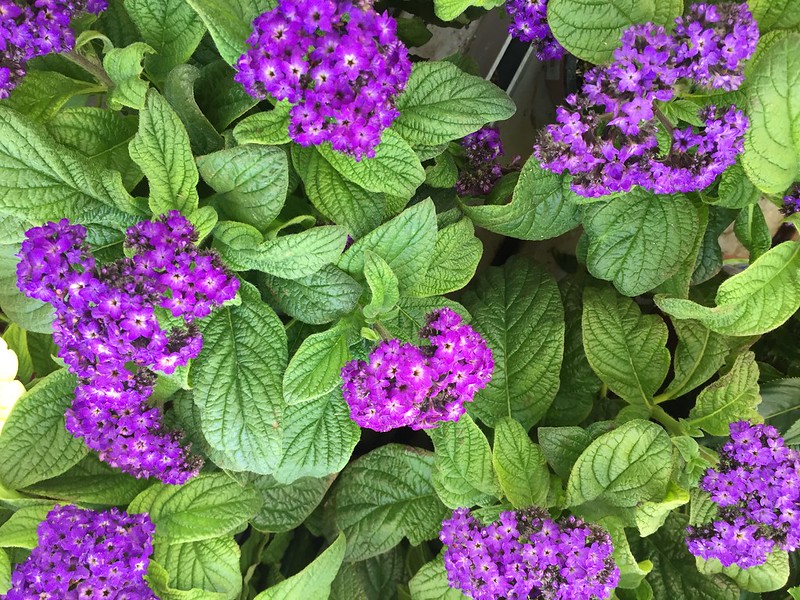
Botanical name: Heliotropium
With a rich, heavy scent and a shock of violet flowers, the heliotrope is a welcome addition to an outdoor space, and will be enjoyed by bees and humans alike.
Honesty
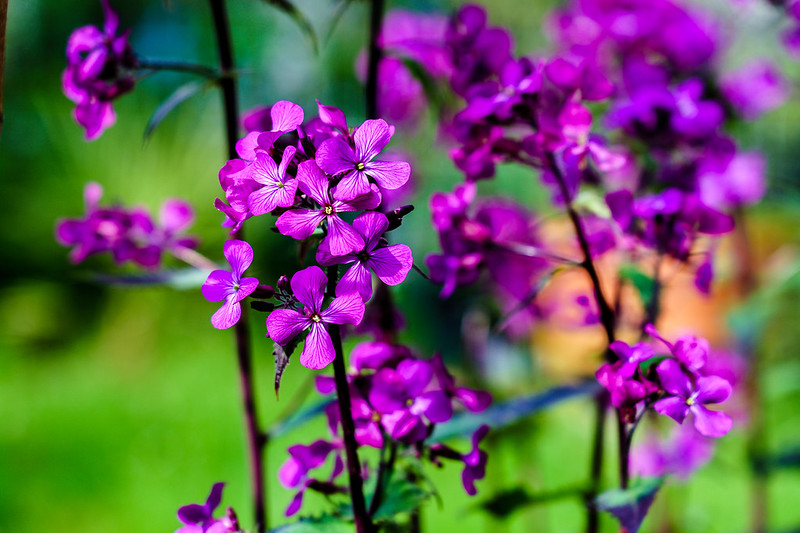
Botanical name: Lunaria annua
With such a lovely name, it is little surprise that this is a popular flower, and it doesn’t hurt that the delicate violet blooms look super cute in any garden – perfect when nestled amongst other flowers and colors.
Liatris
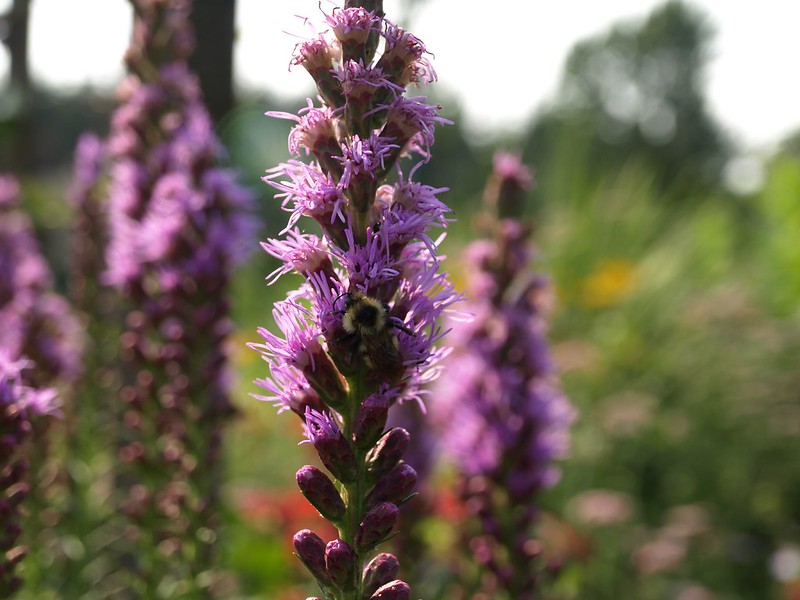
Botanical name: Liatris
Small and spiky, this is a plant that really makes the most of every bloom, and you can expect to see them all over the stalk of the plant.
Reaching between one and five feet tall, you will have to give these a little extra attention when first planted, but it doesn’t take them long to find their feet.
Lilac
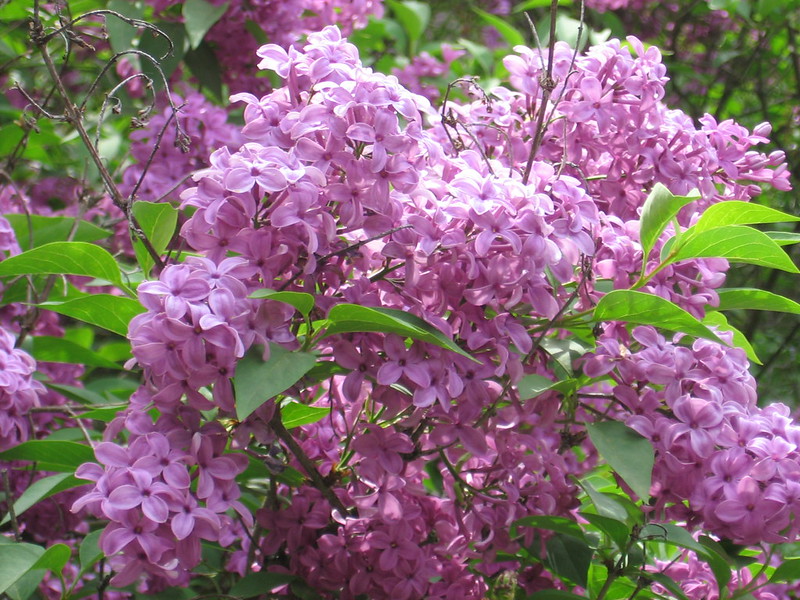
Botanical name: Syringa
Despite the colorful name, lilacs actually come in a wide variety of shades and colors – including rich, dark violets. They have a wonderful scent, and only bloom for two weeks a year, meaning that it feels a little special when you see one spring into life.
Lupin
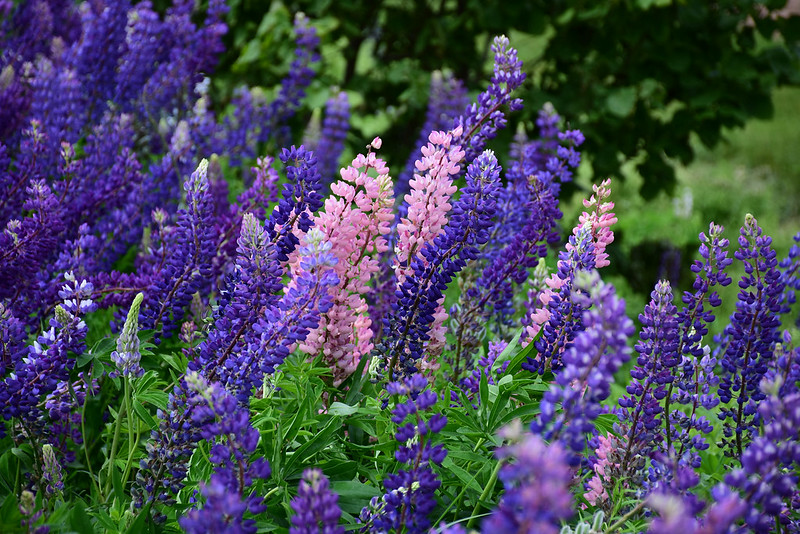
Botanical name: Lupinus
With tiny pea-like pods on tall, proud stems, the violet shades of lupin are easily picked out in a crowded garden or woodland. This is a popular choice in many bouquets, and it is easy to see why!
Lisianthus
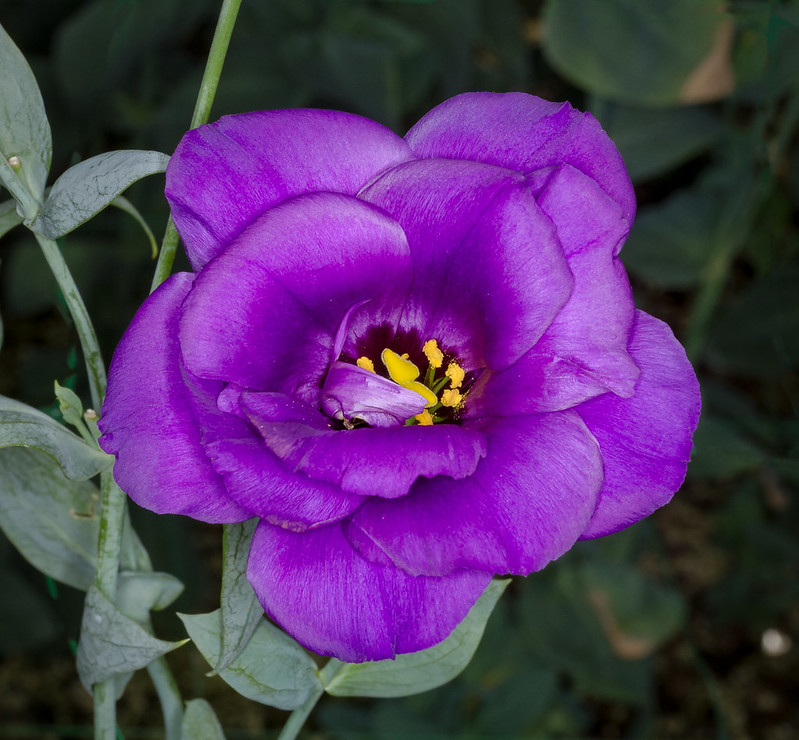
Botanical name: Eustoma
With stunning violet petals and a shock of contrasting yellow for the center, the Lisianthus flower is often compared to roses for its elegance and beauty. There is a perk, however – these are much easier to grow, provided that they are not overwatered.
RELATED: No Shrinking Violets: 18 Different Types Of Violet Plants
Aster
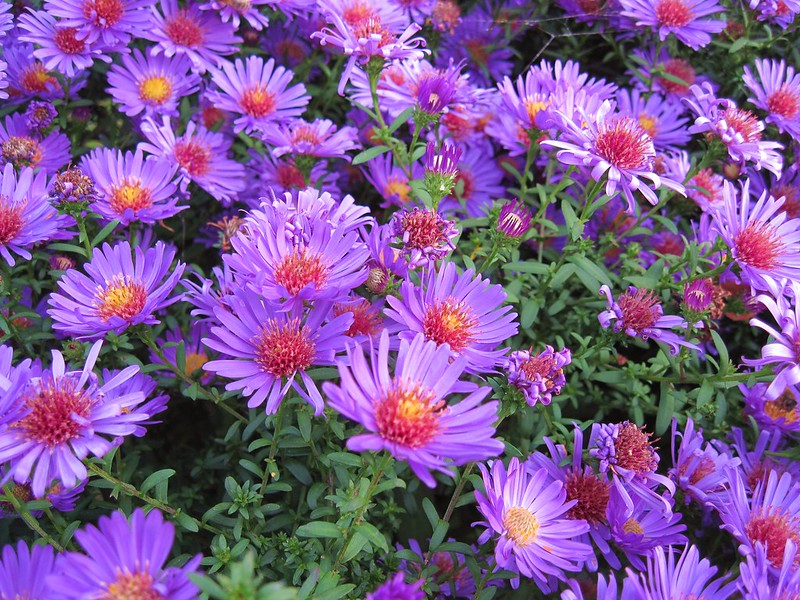
Botanical name: Aster
Often confused with daisies, Aster flowers not only look great, but they can actually offer benefits to other plants and flowers – if they are planted near flowers that need a little extra help in establishing a root system, they can be very beneficial.
As an added bonus, both bees and butterflies love the violet petals!
Mystic Merlin
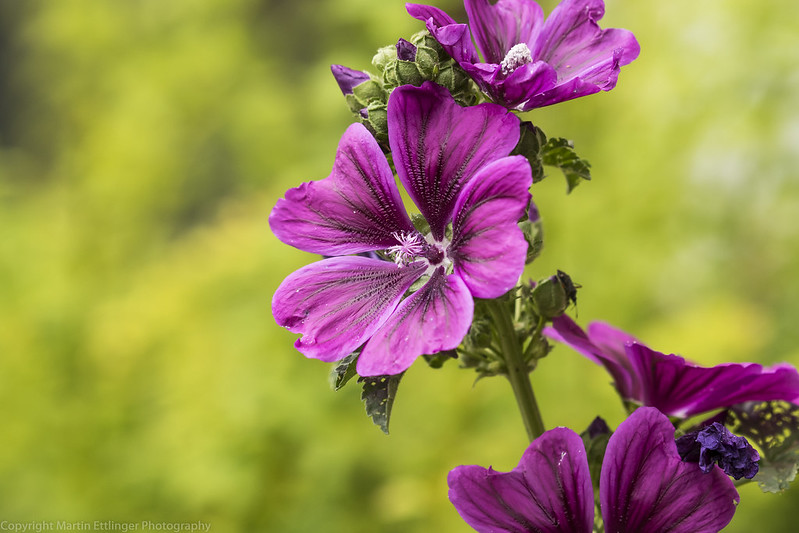
Botanical name: Malva sylvestris
So named for the legendary magician, Mystic Merlin is a stunning and unique flower, native to England, where it remains popular. For a pretty flower and a cute talking point, this should be on your list!
Purple Pansy
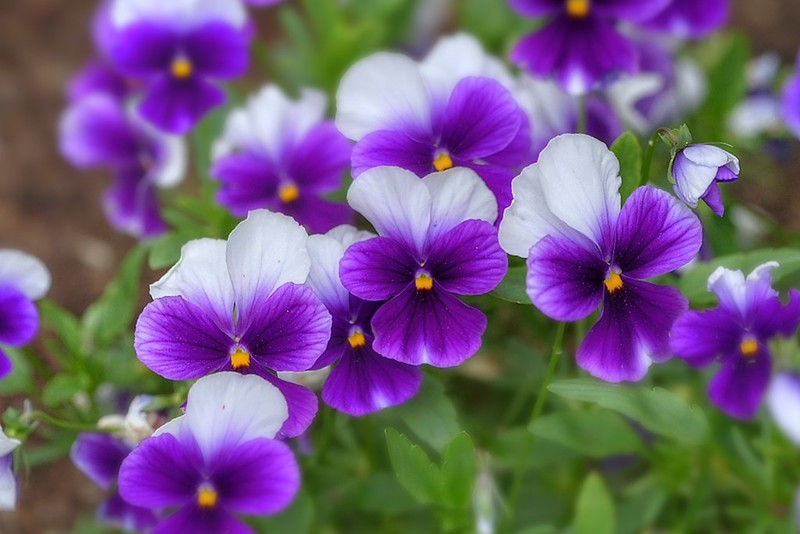
Botanical name: Viola x wittrockiana
Pansies are often voted as one of the most popular flowers, and when they coat the ground with their stunning violet petals, the results can be truly breathtaking.
Pasque
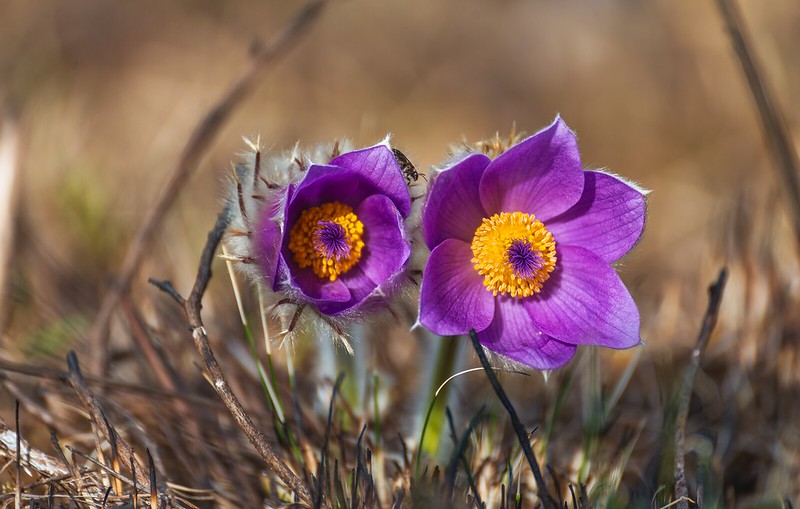
Botanical name: Pulsatilla
The official native slower of South Dakota, the tiny Pasque is a key member of the buttercup family, and boasts bright yellow centers to contrast with the violet purple petals for a stunning overall look.
Petunia
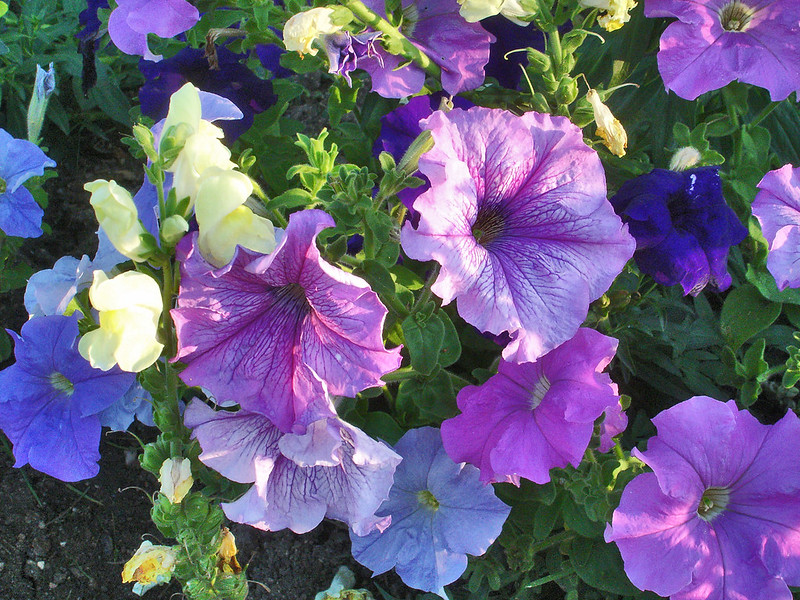
Botanical name: Petunia
Petunia flowers come in a range of colors and shades, but the stunning white and violet blooms are amongst the most common – not to mention the most popular. Petunias are dainty, and will need a little extra TLC in order to reach their full potential.
Rhododendron
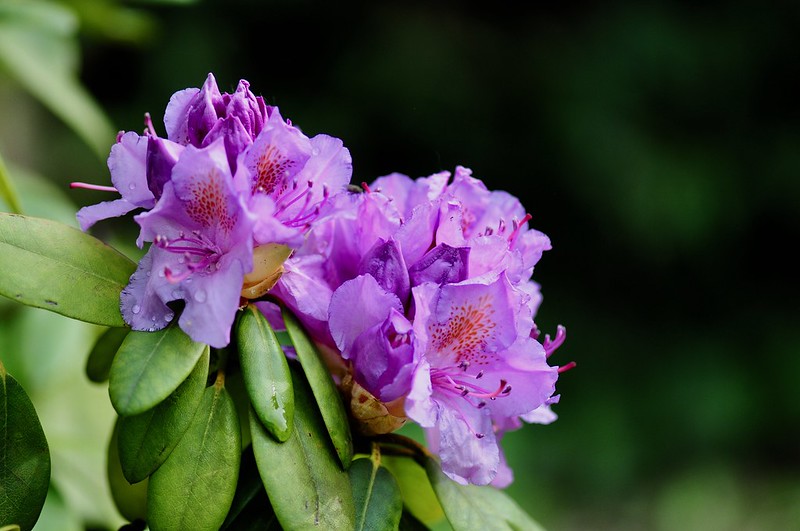
Botanical name: Rhododendron ferrugineum
Rhododendrons are a great option if you are looking for flowers that will stand the test of time, as they eventually bloom into large bushes which can become a key focus point of your garden. Don’t forget to add wood chips to the base of the plant.
Pincushion Flower
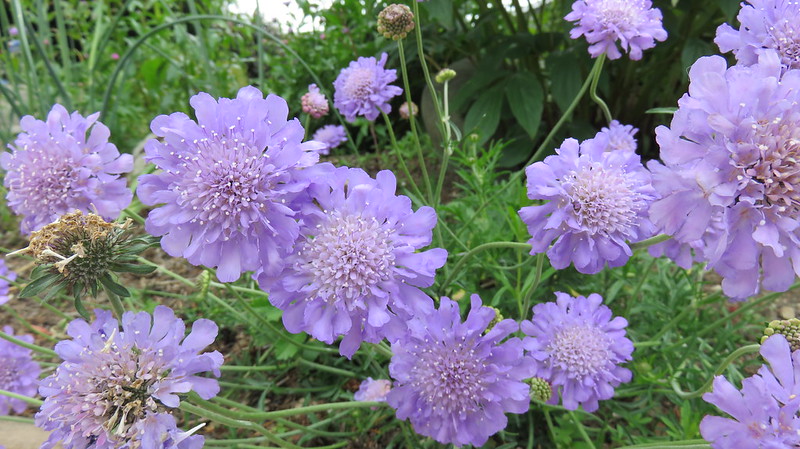
Botanical name: Scabiosa
A wonderful combination of dainty flowers and pincushion aesthetic, this is a flower that makes a great addition to any window box, or as a larger ground covering if you have plants with shallow roots.
They are also perfect for attracting honey bees and butterflies!
Sea Holly
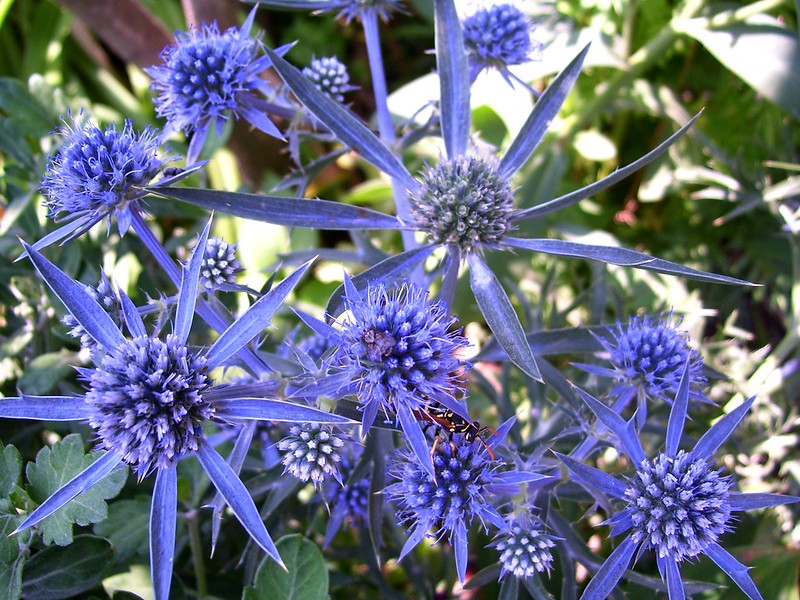
Botanical name: Eryngium
Despite being odd, sea holly has a certain unique charm, and is guaranteed to stand out from the crowd – especially when it is surrounded with more traditional, gentle flowers.
Wisteria

Botanical name: Wisteria
Another popular and well-known flower, Wisteria looks wonderful when it is grown close to borders and fences, and will climb quickly to cover any surface and offer an elegant look to your space. It also smells amazing!
Hydrangea

Botanical name: Hydrangea macrophylla
Bushy, purple blossoms make the hydrangea flower easy to spot, and these will add a wonderful touch of grace and a pop of color to your outdoor space, along with an invigorating and inviting scent.
Zinnia
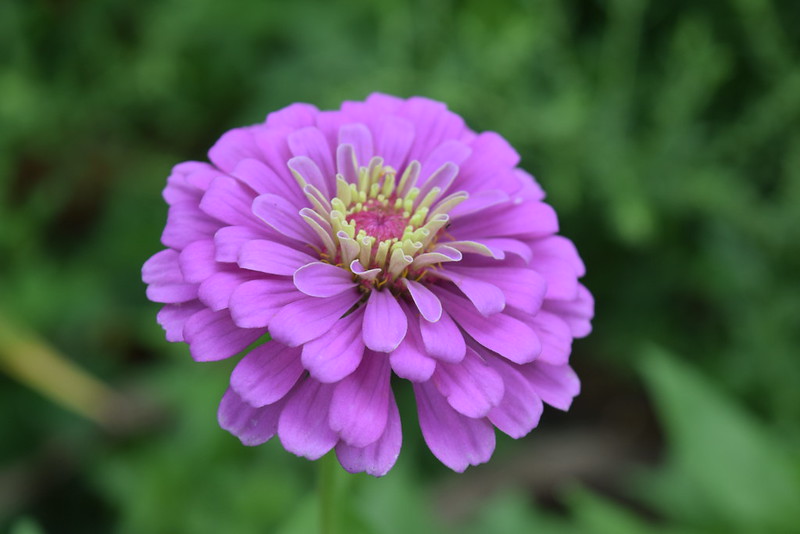
Botanical name: Zinnia
Easy to plant and grow, Zinnia plants will provide you with lots of blooms from a single flower, and can be a great way to add color with minimal effort.
Moonflower

Botanical name: Ipomoea alba
A relation to the popular morning glory, moonflower is mysterious and enigmatic, closing its violet blooms during the day, and then opening up to greet the moon at night – ideal for any nocturnal gardeners or night owls.
Dianthus
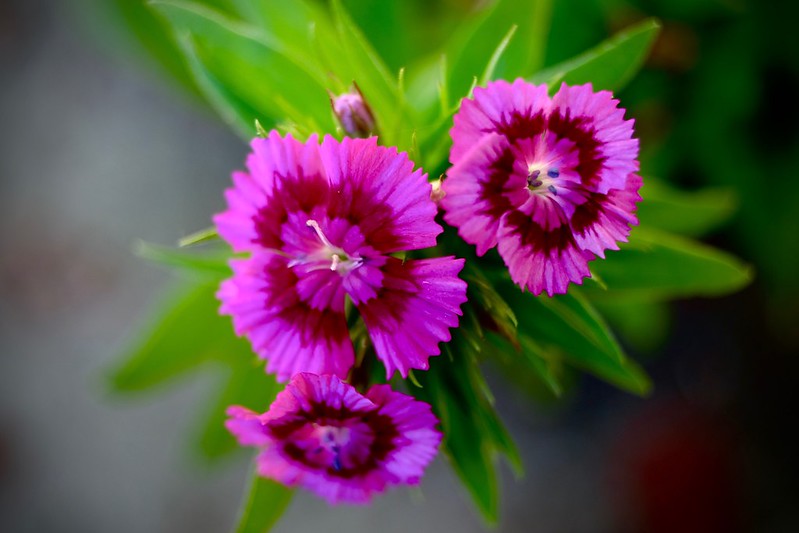
Botanical name: Dianthus
With delicate, wispy petals and a distinctive polka-dot pattern, Dianthus flowers come with a wonderfully tropical look, and this can be a great way to warm up your garden with deep, violet hues.
You should note that Dianthus flowers will need to be fertilized every five to seven weeks if you want to ensure that they continue to bloom.
Hellebore

Botanical name: Helleborus
Often associated with witchcraft and the occult, hellebore offer long-lasting blooms that are sure to bring a smile to your face, and can last for around eight weeks at a time as long as they are taken care of properly.
Hellebore flowers look great when in their natural surroundings, or dried and used as stunning decorations.
Sweet Pea
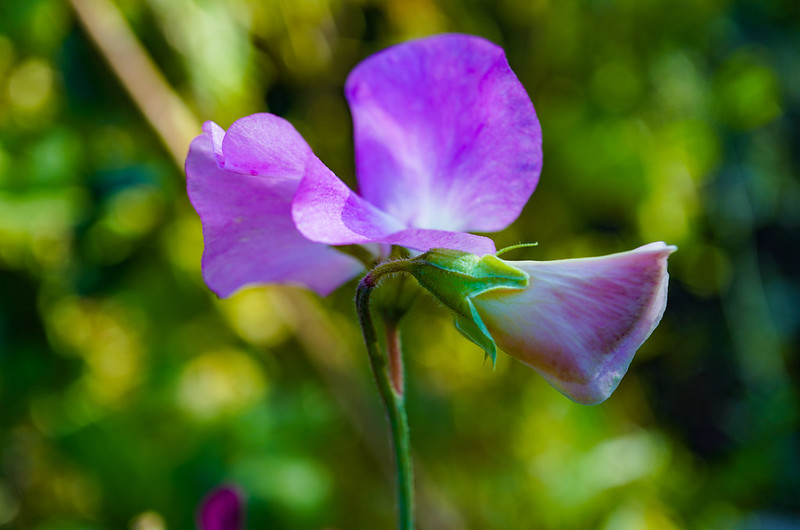
Botanical name: Lathyrus odoratus
A common ingredient in many popular perfumes, sweet peas are an adorable and delicate addition to your garden, guaranteed to bring you joy with their blooms for months to come.
Sweet pea flowers can be tricky to grow, but once they are established, they will become tough, hardy and able to take good care of themselves.
Gloxinia
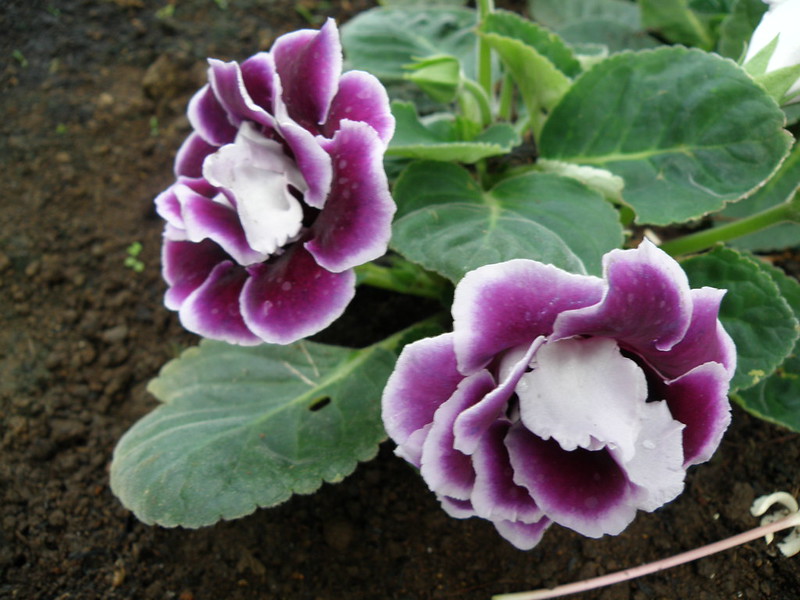
Botanical name: Gloxinia
If you love roses, and have always coveted a miniature version of these romantic flowers, then Gloxinia blooms are likely to become your new favorite flower – they are a tiny version with a bloom that can last for up to eight weeks.
You should note that when they have bloomed, however, they will need to be replanted.
Butterfly Bush
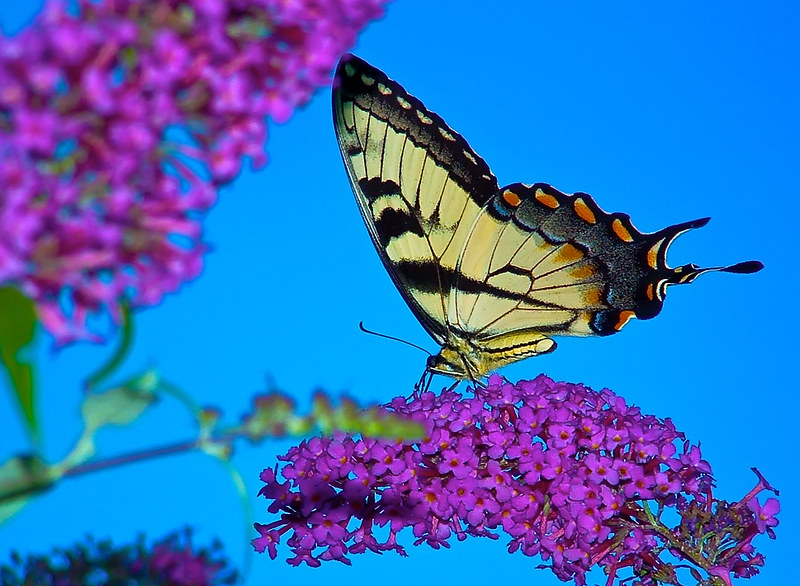
Botanical name: Buddleja
As the name suggests, the Butterfly Bush is a great option for anyone trying to increase the number of butterflies that pay a visit to their garden – the tiny insects love this bush. With enough love and care, it can even grow into a gorgeous tree for you to enjoy for years to come.
Final Thoughts
These are just a few of the rich array of violet flowers that exist in nature, and should offer you plenty of ideas and inspiration to learn more about this vibrant color.
Whether you are deciding on a color scheme for your very first garden, updating an existing yard, or are simply interested to learn about the wonders that nature has to offer, remember that the journey of learning never ends – there is plenty more to discover!
Editor’s Recommendations
7 Wonderful Wisteria Flowers (Including Pictures)
31 Stunning Yellow Flowers (Including Pictures)







